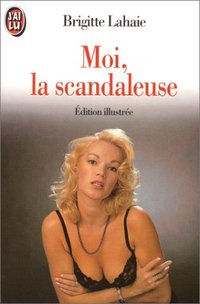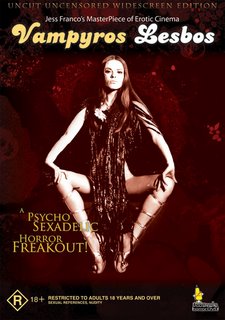Yellow Fever
In case you did not know, a new menace is surfacing in the depths of the brazilian jungle. A menace you might want to consider. Since you could very well be among those it will affect, should a man make his dreams come true. This man is not just any man, but he has the same dreams that you do, the simple dreams of the common folk : world domination.

Fu Manchu is a character from another age, as Tsai Chin puts it in Blue Underground's documentary "The Rise of Fu Manchu", featured among the extras of their BLOOD OF FU MANCHU DVD. Created by Sax Rohmer, a pulp writer not unlike Jean Bruce or Ian Fleming, who stuck to his character and made him go through multiple adventures, Fu Manchu is a powerful chinese criminal who constantly plots on taking over the world. His plans are often ruined by his numerous ennemies, and he always disappears while saying : "The world will hear from me again !". Which is, if we consider it, a little different from Coplan or Bob Morane, as the constant "hero" of Rohmer's stories is a villain.
Under the lens of Jess Franco and the pen of Harry Alan Towers, a new story arises, and a new narrative language erupts. With a seemingly respectable budget, Franco takes on the story with his usual style, using the jungle's motifs as hideouts from behind which he shoots the action. The Towers productions did not really allow him to linger on things and scenes and to implement his typically spanish sense of (slow) rythm, but you can still feel his experienced eye, as you see through it.

The theme of a female slave being used as a weapon was already present in MISS MUERTE and would be a current matter in many of the Franco films to come.
Cabaret numbers are here replaced by exotic dancing in the streets, a slow seduction that will prove deadly for the seductress. Sancho Lopez' gang are ruthless killers; shooting an intellectual just to steal his glasses, and attacking a small village to kill everybody in sigh after warning them that the bandits "mean no harm". As in many cases, and without evoking the Stockholm syndrome - because, frankly, who cares about psychological depth in such a production ? - the girls of the village are raped but end up enjoying the company of these wild outlaws, who don't look like they bathe or shave very often.
Christopher Lee was caught appearing in all the Towers-produced Fu Manchu adventures (five of them between 1965 and 1969) and Jesus Franco directed the last two entries, the subject of our discussion today and the infamous CASTLE OF FU MANCHU, which I have not yet seen.

The most surprising character here is perhaps Sancho Lopez, played by Ricardo Palacios. This grotesque and violent man, with his impossible hat and constant laugh, appears to be an almost overweight giant when put next to other characters, much like Christopher Lee is significantly taller than his "daughter" Tsai Chin. His physique allowed him to appear in a few of Leone's westerns, notably FOR A FEW DOLLARS MORE (1965) and THE GOOD, THE BAD & THE UGLY (1966). Franco possibly met him while shooting ATTACK OF THE ROBOTS in '65, in which Palacios has a small role, and they worked together again during the mid-eighties, on various Spanish productions (SOLA ANTE EL TERROR, BLUES DE LA CALLE POP, etc). His final scene in THE BLOOD OF FU MANCHU opens a world of possibilities. Was he supposed to eventually come back in some sort of sequel ?
You can say that the movie has a funny effect of making you want to see more Fu Manchu titles. Perhaps it is because of the success of Franco making his film "pulp-like" in a visual and rythmic aspect, thus achieving some sort of supremely entertaining freshness. Or perhaps it is the nostalgia of this long-lost era, where such movies could be shot with decent budgets and no real preoccupation to sell the movie worldwide.

Fu Manchu is a character from another age, as Tsai Chin puts it in Blue Underground's documentary "The Rise of Fu Manchu", featured among the extras of their BLOOD OF FU MANCHU DVD. Created by Sax Rohmer, a pulp writer not unlike Jean Bruce or Ian Fleming, who stuck to his character and made him go through multiple adventures, Fu Manchu is a powerful chinese criminal who constantly plots on taking over the world. His plans are often ruined by his numerous ennemies, and he always disappears while saying : "The world will hear from me again !". Which is, if we consider it, a little different from Coplan or Bob Morane, as the constant "hero" of Rohmer's stories is a villain.
Under the lens of Jess Franco and the pen of Harry Alan Towers, a new story arises, and a new narrative language erupts. With a seemingly respectable budget, Franco takes on the story with his usual style, using the jungle's motifs as hideouts from behind which he shoots the action. The Towers productions did not really allow him to linger on things and scenes and to implement his typically spanish sense of (slow) rythm, but you can still feel his experienced eye, as you see through it.

The theme of a female slave being used as a weapon was already present in MISS MUERTE and would be a current matter in many of the Franco films to come.
Cabaret numbers are here replaced by exotic dancing in the streets, a slow seduction that will prove deadly for the seductress. Sancho Lopez' gang are ruthless killers; shooting an intellectual just to steal his glasses, and attacking a small village to kill everybody in sigh after warning them that the bandits "mean no harm". As in many cases, and without evoking the Stockholm syndrome - because, frankly, who cares about psychological depth in such a production ? - the girls of the village are raped but end up enjoying the company of these wild outlaws, who don't look like they bathe or shave very often.
Christopher Lee was caught appearing in all the Towers-produced Fu Manchu adventures (five of them between 1965 and 1969) and Jesus Franco directed the last two entries, the subject of our discussion today and the infamous CASTLE OF FU MANCHU, which I have not yet seen.

The most surprising character here is perhaps Sancho Lopez, played by Ricardo Palacios. This grotesque and violent man, with his impossible hat and constant laugh, appears to be an almost overweight giant when put next to other characters, much like Christopher Lee is significantly taller than his "daughter" Tsai Chin. His physique allowed him to appear in a few of Leone's westerns, notably FOR A FEW DOLLARS MORE (1965) and THE GOOD, THE BAD & THE UGLY (1966). Franco possibly met him while shooting ATTACK OF THE ROBOTS in '65, in which Palacios has a small role, and they worked together again during the mid-eighties, on various Spanish productions (SOLA ANTE EL TERROR, BLUES DE LA CALLE POP, etc). His final scene in THE BLOOD OF FU MANCHU opens a world of possibilities. Was he supposed to eventually come back in some sort of sequel ?
You can say that the movie has a funny effect of making you want to see more Fu Manchu titles. Perhaps it is because of the success of Franco making his film "pulp-like" in a visual and rythmic aspect, thus achieving some sort of supremely entertaining freshness. Or perhaps it is the nostalgia of this long-lost era, where such movies could be shot with decent budgets and no real preoccupation to sell the movie worldwide.






